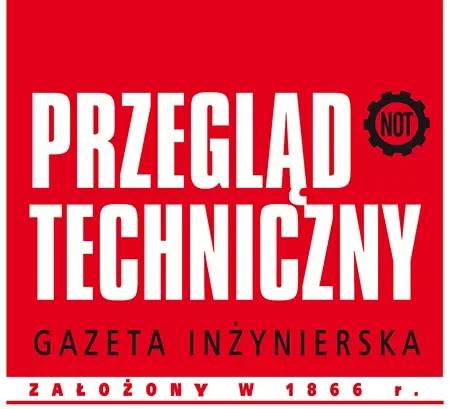The Society of Horticultural Engineers and Technicians (SITO) integrates into its ranks half a thousand specialists in horticulture, landscape architecture, environmental protection and floristry. It is a nationwide non-governmental organization that operates under the Federation of NOT Scientific and Technical Associations. SITO talks to Jolanta Czudak, elected for another term, president of the General Board, about the new challenges of SITO We have no shortage of energy and ideas.
– A second term may prove more difficult for your CEO than the previous one?
– Such a risk is always there, because this is not an easy time for the horticultural industry, but I think I will manage. The previous term from 2019 to 2022 was not easy either. First the pandemic, then the outbreak of war in Ukraine, the embargo on the export of our goods to Russia and Belarus, which was the largest market for gardeners. Added to this was the energy crisis, a significant increase in fuel and energy prices, which made it unprofitable to grow flowers, seedlings and novelties in greenhouses. The horticulture industry has become unprofitable and attractive. Nevertheless, our association continued its statutory tasks, engaging in educational activities and industry events. That’s probably why I was elected for a second term at the end of May, during the XXII General Delegates’ Convention in Lublin. I also succeeded in recruiting young people as new members to the Board of Directors, which I am very happy about.
– Why was this so important to you?
-Young people are not only creative, but have much more ideas, energy and willingness to work. Łukasz Zając of Warsaw was appointed vice president, and Iwona Brankiewicz of Lublin became secretary general. Young people can use new technologies very effectively and are extremely active in social media. They establish interesting relationships with their peers and widely popularize SITO activities. This is necessary in shaping the image of the association, because we then open ourselves to the world. We are committed to working with industry representatives, academia, education, NGOs and others. We want to share our knowledge and experience universally. The competence of the association’s members is being used right now by the Ministry of Education and Science. We have been asked by the ministry to revise and update the core curriculum for horticulture and landscape architecture.
– The SITO board intends to join this initiative of the ministry?
– We are participating in the establishment of the Branch Skills Center (BCU) in the field of horticulture together with the leader of this project – the Agricultural Training Center School Complex. Stanislaw Szumec in Bielsko-Biala. This is a facility with superbly equipped teaching and training facilities, suitable for the study of horticulture, landscaping and floristry. The School Complex has modern laboratories for theoretical and practical classes. Adjacent to the ornamental plant studio is a teaching greenhouse, with many species of flowers and plants for indoor and outdoor planting. The knowledge of SITO specialists and experts involved in BCU activities will further enrich this education. This will benefit students, while specialized courses and training related to improving professional skills will benefit representatives of the horticultural industry from across the country. Also participating in our project is the University of Agriculture named after him. H. Kołłątaja in Kraków and the Polish Society of Horticultural Sciences.
– The division of responsibilities and tasks of the various partners has already been concretized?
– We are in talks and in the coming months individual actions will be concretized. At SITO we have a great staff, not only horticultural engineers and technicians, but also landscape architects, environmental specialists and florists. Our experts will provide professional training, improving the professional skills of the industry community. In fact, we have a lot of experience in this area. SITO has statutory authority to conduct courses and grant industry authorizations, and we have been doing so for years. We organize scientific and technical conferences with the participation of major companies. We provide specialized training and courses for supervisors of urban green areas, maintenance and protection of park trees, preparation of documentation of historic garden layouts. We participate in national and international horticultural events, fairs, florist exhibitions combined with competitions and demonstrations of flower arrangement. We also initiate many different events that are helpful to our industry.
– In the past term, these events were also held?
– There were fewer than usual, but in the past term, ZG SITO organized the 1st National Florist Conference “The Power of Flower” in Jasionka near Rzeszow at the G2A Arena Exhibition and Congress Center as part of the GARDEN EXPO Garden and Landscape Architecture Fair. It was co-organized by the Rzeszow branch of SITO and the Subcarpathian Florist Club of SITO. The conference featured interesting lectures on floriculture, floristry and horticulture. There were florist demonstrations prepared by master florists and a panel discussion “Professional florist education in Poland”.
We also cooperated intensively with the IB Institute of Horticulture in Skierniewice, to which we moved the headquarters of the SITO ZG several years ago. At the invitation of the Institute of Horticulture, we participate in various events, including the Festival of Flowers, Fruits and Vegetables and the IO Open Door. In the historic interiors of the Institute, we held a floral exhibition, which was the culmination of a floral workshop organized by the National Center for Agricultural Education in Brwinow for a group of horticulture and landscape architecture teachers from across the country. There were a lot of these events with the participation of the SITO ZG and our branches in Warsaw, Częstochowa, Lublin, Rzeszów, Poznań and Skierniewice. We participated in the GARDENIA, Land Art, and “Naturalia” Fair, whose organizers were the SITO Branch in Poznan and the National Museum of Agriculture and Agro-Food Industry in Szreniawa. We participated in a training trip to the “FlORIADE Expo 2022 “exhibition in the Netherlands, which was organized by the Lublin branch of SITO.
– Has the pandemic hindered the association’s management from carrying out its statutory activities?
– It made it more difficult, but many events were also held online. The Warsaw branch of SITO uses a communicator developed by the NOT-Informatics company. This system is very useful and we use it sometimes during the meetings of the General Board. The traditional form of contact has a completely different meaning in the horticultural industry. Despite the difficult periods during our many years of activity, the General Board of the Association, together with 7 field branches, is constantly active. Floriculture is developing very rapidly. This industry is particularly close to my heart, so I am involved in popularizing it, creating trends, as well as expanding knowledge about it. The Subcarpathian Florist Club of SITO, of which I am also president, is the originator of many meetings and events. An interesting project has been implemented in Rzeszow with our participation: the Academy of Floristry at the College of Engineering and Economics. On the publishing market will be released any moment my author’s book “In the world of flowers. Secrets of Floristry.” This is my fourth book in the field of floriculture designed for those wishing to expand their knowledge in this field, as well as for students and flower lovers. This will be an item describing the principles of floristry, richly illustrated with my compositions. This knowledge is not only theoretical, but also confirmed by practice, since in Ropczyce, continuously since 1989. I run flower shops. I also often appear on radio and television programs to popularize these issues, as education in this area is very important. Recently, the term sustainable floristry has also emerged.
– What is sustainable floristry?
– Making rational choices that are friendly to environmental resources and protecting human health. I feel responsible for promoting ecology, as I was awarded the title of Silver Engineer 2020 in the Ecology category in the Technical Review poll. Most of the cut flowers offered in European and domestic markets are grown in Africa and South America. This means they have to be transported over long distances. Flowers travel thousands of kilometers by truck, plane or cargo ship before they reach our market. All of this transportation contributes to excessive emissions of carbon dioxide and other greenhouse gases into the atmosphere. To preserve the shelf life of cut flowers and cut greens during transport, they are stored in coolers at near-zero temperatures. This intensive cooling process also increases the carbon footprint. Our professional group is committed to reducing the carbon footprint and greening crop production in Poland, which will help our domestic industry. SITO promotes sustainable floristry and encourages professionals in the field to take steps toward sustainability by choosing the type of flowers and their source. Buying goods from local gardeners is ideal. The flowers are fresh, straight from the field, from the garden or from under the covers. In Poland, we have beautiful native vegetation. We don’t always have to import cut flowers from the end of the world. Farmers introducing the production of low-cost cut flowers can capture new markets, among others. Florists, wedding studios, garden centers, decorating companies. Sustainable floristry is a win-win. It also minimizes waste, plastic flowers, decorations in arrangements, in favor of recyclable packaging.
– Do the arguments you cite get through to manufacturers?
– This is a new ecological approach and it is difficult to judge whether it will find approval among the majority. We are trying to convince people to change their approach, but the industry is in a rather difficult situation for a number of reasons. Greenhouse production is no longer profitable enough due to the high cost of energy, fuel, crop protection products, fertilizers. Climate change is wreaking havoc on gardens and orchards. Added to this is the dramatic situation with fruit exports.
A dozen years ago, the Polish orchard industry was the largest exporter of apples in the world. The main customers were Russia, Belarus, or Kazakhstan. Due to the embargo caused by the war in Ukraine, fruit growers have lost these markets. The search for new ones is not easy. Flower producers have found themselves in a similar position. They are unable to compete with large companies that are handling the effects of the crisis without comparison. In this term, we want to focus in SITO on such activities that will help gardeners get out of this impasse.
We have a difficult task ahead of us, but together with the scientific community we will disseminate solutions that are good for our professional group. I also have high hopes for the BCU’s activities. We must not only face the problems, but continue to develop and rebuild the industry to make it strong again. Our members join in this activity, in which we are supported by the Federation of NOT Scientific and Technical Associations. I hope we will all emerge victorious from this impasse. We are not short of ideas or energy, and this is certainly a reason for optimism.
– Thank you for the interview.





